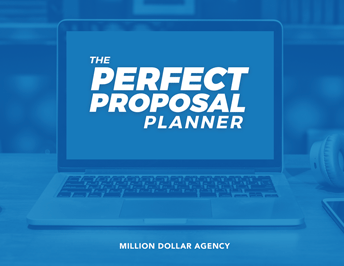The Fees at Risk Model

The Fees at Risk Model – The High-Level Extension of Value-Based Pricing
You’ve implemented value-based pricing into your agency and you’re ready to take it to the next level. The Fees at Risk model helps you to maximize revenue from the big ticket clients.
With value-based pricing, you’re finally charging your clients properly.
You’re getting what you’re really worth instead of an hourly fee that doesn’t account for everything you have to offer.
However, you can even build on that model, especially when you’re dealing with your biggest clients. These are the guys who generate $500,000+ for your agency every year.
To do that, you’re going to need the Fees at Risk model. It’s an extension of value-based pricing that ensures you maximize revenue from your biggest clients.
But before I get to that, let’s just go over a couple of the problems with the old hourly and retainer models that most agencies use.
The Hourly and Retainer Model Problem
The issues with the hourly model are pretty evident.
If you’re charging by the hour, your client isn’t getting a true representation of the value that you offer. You’ve just become a service provider for them.
That means they may go elsewhere if they find someone who offers a lower hourly rate. Or, you have to deal with a constant back and forth from clients who want you to lower your prices.
That’s a waste of your time, especially when you’re focusing on building an agency.
As for the retainer model…
Put it like this. Let’s say that you’re a client of mine and I tell you that I want to hold you to a yearly retainer of $300,000 per year.
That’s $25,000 per month, which is a big chunk of money.
As my client, you may accept that at first. But eventually, you’re going to have a problem with it. If business gets tight for a month, you’re not going to want to pay that $25,000 to me because you have other priorities.
This is where the Fees at Risk model comes in. With this model, you’re going to be able to earn that $300,000 in revenue while keeping your clients happy.
The Key Components
The Fees at Risk model is a great way to show the client how much value you have to offer. Plus, it means they face less risk for high-value services.
There are three key components of this model:
Component #1 – The Base for Engagement
Let’s come back to that $300,000 charge that I mentioned above. You want to split that into thirds to cover each of these components.
That means you’re going to have a base of engagement of $100,000 in this example.
You’re putting out your statement of intent with this component. You’re telling the client that your agency is full of smart people who know exactly how to get the results they’re looking for.
But that also means you’re in demand.
To secure your services, the client has to pay a base price of $100,000. That’s just for the privilege of working with you in the first place.
If you tried to charge that alone, you’re going to get varying responses from your clients. That’s why you need the second component to build on the value you offer.
Component #2 – The Milestones
Every project has key milestones.
You’re going to build those on top of your base engagement fee to cover the next $100,000 you’ll earn from the client.
You’ll likely negotiate with the client to figure out what their milestones will be.
For example, you may have a milestone for completing the SEO audit of the client’s site. You may have another for hitting a pre-decided health score for the site.
Anything that offers a demonstration of the work you’re putting in can act as a milestone.
This is where you start building your client’s confidence in your service. You’re telling them that you only charge them once you reach the milestone. That means they don’t have to pay if you don’t get them to where they need to be.
Plus, you’re showing them that you’re so confident in your agency’s abilities that you’re willing to take that risk.
Component #3 – The Collaborative Upside
This is where you start earning money from the sales that the client makes as a result of your efforts.
You’re basically telling the client that you’ll take x amount of dollars whenever they sell a certain amount.
For example, you may take 10% for every $1 million worth of products that they sell.
The key here is that you’re charging that fee on the increase that your service offers. That means you get it when they sell $1 million more than they sold before working with you.
This works so well because the client doesn’t hear the scary $300,000 figure I mentioned at the start.
They hear that you’re going to increase their sales by $1 million. In that context, paying you $300,000 isn’t as scary because they’re getting $700,000 in additional revenue.
And of course, this model scales. That means you make a further $300,000 when the clients sales increase by $2 million.
That’s a total of $600,000.
And it goes up to a total of $900,000 for a $3 million increase, and so on.
Why Go With a Big Number?
Maybe you’re thinking you could adopt this model for smaller sales increases.
That may not work.
The key to going for the big number, such as the $1 million increase, is that you want your client to envision their future with you.
If you say “I’m going to take 10% of every $1,000 I make for you” then you’ve just become a salesperson.
When you go for the higher number, you’re making yourself into a partner rather than a commission-based service. You’re giving them real value for their business, which means they’re more likely to stay with you for the long haul.
Engaging in the Conversation
So, how do you start the Fees at Risk conversation with your prospects?
It differs depending on if you’re talking to an existing or new prospect.
Existing Prospects
If it’s an existing prospect, you have to check that they’re already very happy with what they have right now. A disgruntled prospect may not take too kindly to a suggestion of higher fees, even if they get higher rewards.
If they’re happy, you can approach the conversation like this:
“I would love to do more with you. Would you like to do more if I had a way to grow your company even faster?”
They’ll usually say yes. From there, you highlight the value that comes with working together with you. Then, you move the conversation onto the prospect of building a collaborative upside into the relationship. Talk to them about how this means that you cover all of the questions about what’s in and out of scope.
Plus, they come away with more revenue thanks to your efforts.
New Prospects
The approach changes for new prospects. You may want to start smaller here and work on a single project for them at first. For example, you may start with a landing page.
This is the only time I’ll recommend using an hourly pricing model. Charge them an hourly price for the single service and deliver beyond their expectations.
From there, you can move the conversation onto the milestone-based model I talked about earlier. Talk to them about certain milestones that you’ll achieve and what they’ll cost.
Once they’ve agreed to that and you’ve delivered, you move into talking about charging for a program. For example, you may have a year-long project for which they’ll pay $100,000. You charge them $25,000 per quarter and deliver on that.
After building all of that trust, you can move them onto the value-based model of pricing. And now, you have an existing prospect for whom you can use the above method.
Why Does this Work For Clients?
We know why this model works for you. It means you’re picking up hundreds of thousands of dollars per year for the value that you offer.
But why does it work for clients?
Simply put, they can always win but never lose.
By the time you introduce this model, you’ve already shown them that you offer value to their business.
Now, they’re going to pay you what they always have. But you’re removing all of the back and forth about the different services you offer. You’re doing away with proposals and all of that time-consuming stuff.
And you’re only getting extra when you offer something of true value to the client, such as the $1 million increase in sales.
Build on Your Value-Based Pricing
Again, the Fees at Risk model isn’t something you want to introduce to brand new clients.
It works best when you’ve spent some time building a relationship and showing that you deliver. Once you have that trust, you can introduce the model. Without said trust, you get varying results as a lot of potentially great prospects will go elsewhere.
The key here is that your agency earns more revenue as the client’s business grows. It’s a win-win situation that will help you to maximize your revenue from your biggest clients.
Dev “Value Generator” Basu


